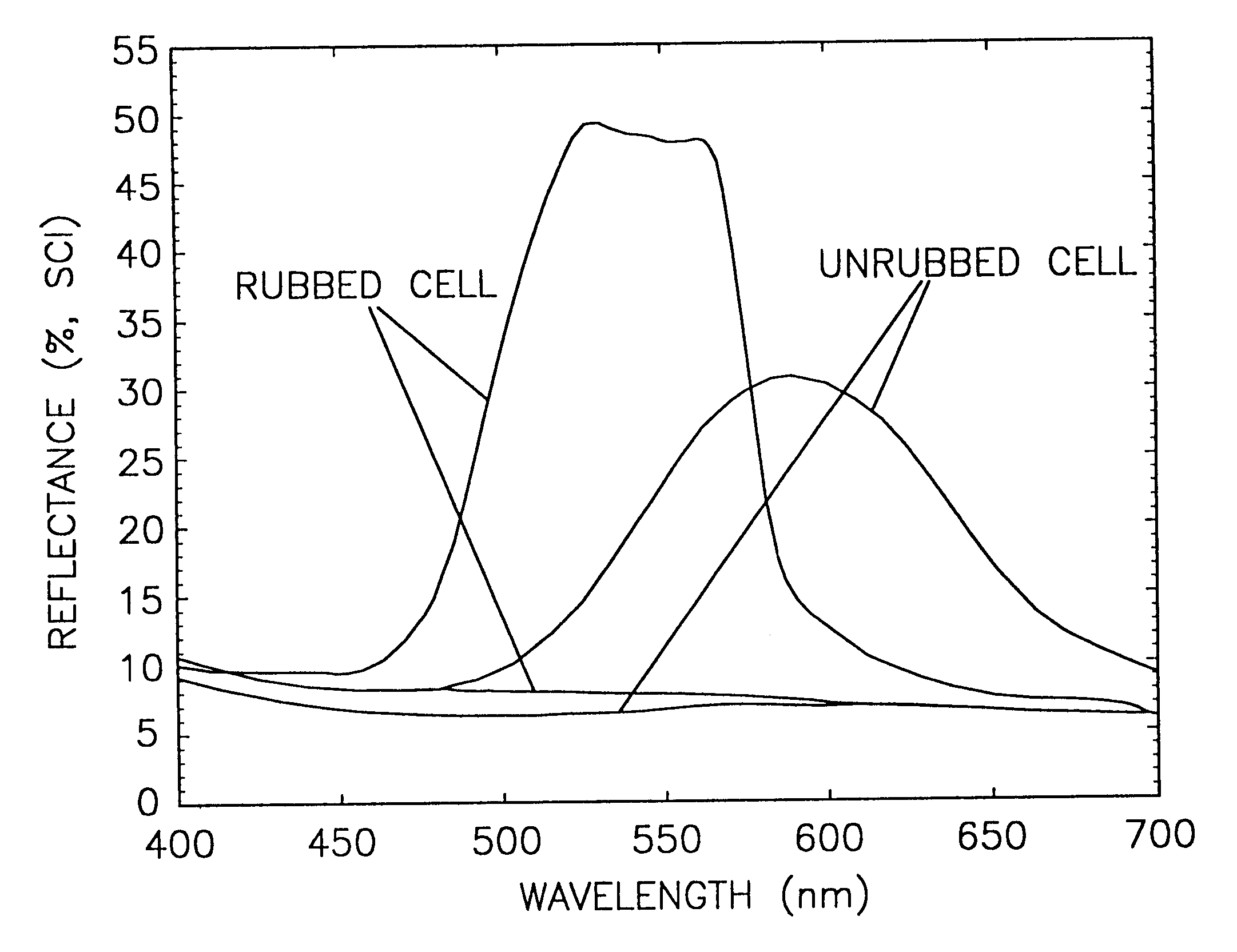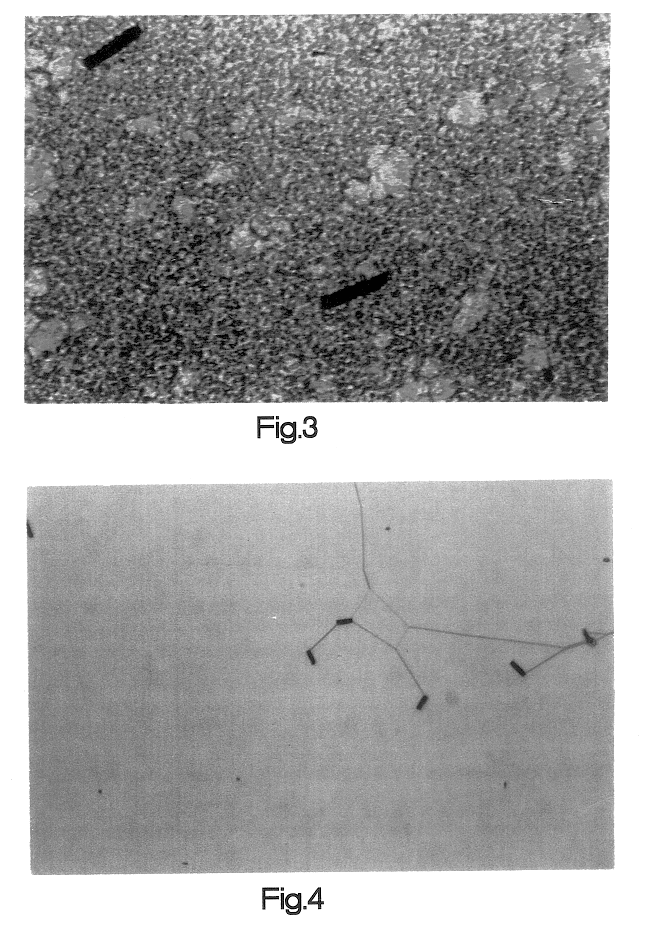Brightness enhancement for bistable cholesteric displays
a liquid crystal display and brightness enhancement technology, applied in the field of reflective cholesteric liquid crystal display, can solve the problems of low reflectance, low commercial value, and patent disclosure of brightness optimization methods, and achieve the effects of reducing cell spacing, high drive voltage, and reducing display cos
- Summary
- Abstract
- Description
- Claims
- Application Information
AI Technical Summary
Benefits of technology
Problems solved by technology
Method used
Image
Examples
example 1
Cells Rubbed On One Side
A display was prepared having a homogeneous alignment surface in the form of a rubbed polyimide on only one substrate. The other substrate included an unrubbed layer of polyimide (inhomogeneous alignment surface) and served to stabilize the focal conic texture. The display comprised four separate test cells, each of the test cells including opposing glass substrates separated by 5 .mu.m glass cell spacers (this cell spacing being used in all cells discussed in this disclosure). The arrays were assembled and vacuum filled with the following Merck cholesteric liquid crystal mixture: 75.60% BLO61, 23.90% E44 and 00.50% C6. Disposed on both glass substrates from the manufacturer (Applied Films Corp., T1X0100 in all examples herein) was a hardcoat and ITO electrodes. Applied to this was a Nissan 720 hard coat material for preventing shorting in the well known manner (800 Angstroms ".ANG." on both sides). On top of this was Nissan 7511 polyimide alignment layer (25...
example 2
Cells Rubbed on Both Sides
Another embodiment of the present invention employs a homogeneous alignment surfaces in the form of rubbed polyimide layers each disposed adjacent one of the substrates. The display comprised opposing glass substrates separated by a 5 .mu.m cell spacing. The display was assembled and vacuum filled with the following Merck cholesteric liquid crystal mixture: 77.60% BL061, 12.10% E44, 10.0% pcyanopentylbenzene as described in U.S. patent application Ser. No. 08 / 862,561, entitled "Low Viscosity Liquid Crystal Material", which is incorporated herein by reference, and 00.30% C6, the reflectance curves of which are shown in FIGS. 9 and 10. The unrubbed cell shown in FIG. 9 included 75.6% BL061, 23.9% E44 and 0.50% C6. Disposed on both substrates was Nissan 720 hard coat material (800A on both sides), and on top of this was Nissan 7511 polyimide alignment layer (250 .ANG.). The same substrates with hardcoat and ITO coatings described in Example 1 were used here. A...
example 3
Alignment Layer Materials
Three types of cells were prepared each with a different alignment layer material, Cells 1, Cells 2 and Cells 3. All of Cells 1 were prepared with Nissan 7511 polyimide alignment material, all of Cells 2 were prepared with Nissan 5211 polyimide alignment material and all of Cells 3 were prepared with DuPont 2555 polyimide alignment material. Three cells were prepared using each type of alignment layer material for a total of nine cells. In FIGS. 12-17, for each type of alignment layer material there was prepared one cell having both sides unrubbed (e.g., "C1.sub.UR-P "), one cell having one side rubbed and one side unrubbed (e.g., "C1.sub.OSRU-P ") and one cell having both sides rubbed (e.g., "C1.sub.BSR-P "). Portions of these designations are underlined in the text for emphasis and are not underlined in the drawings. In the figures, cells rubbed on only one side were provided with further designations regarding whether the rubbed side was up ("U") or down ...
PUM
| Property | Measurement | Unit |
|---|---|---|
| reflectance | aaaaa | aaaaa |
| reflectance | aaaaa | aaaaa |
| pretilt angle | aaaaa | aaaaa |
Abstract
Description
Claims
Application Information
 Login to View More
Login to View More - R&D
- Intellectual Property
- Life Sciences
- Materials
- Tech Scout
- Unparalleled Data Quality
- Higher Quality Content
- 60% Fewer Hallucinations
Browse by: Latest US Patents, China's latest patents, Technical Efficacy Thesaurus, Application Domain, Technology Topic, Popular Technical Reports.
© 2025 PatSnap. All rights reserved.Legal|Privacy policy|Modern Slavery Act Transparency Statement|Sitemap|About US| Contact US: help@patsnap.com



